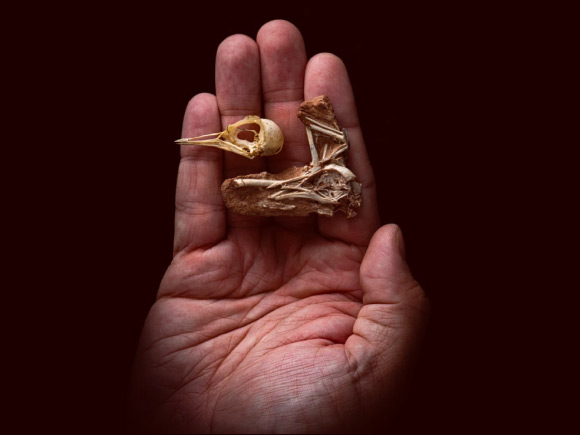Paleontologists have unearthed the exquisitely preserved remains of Cretaceous enantiornithine bird in São Paulo state, southeastern Brazil. The extraordinary three-dimensional preservation of its skull allowed the researchers to digitally reconstruct the bird’s brain.
The newly-identified enantiornithine species lived in what is now Brazil, approximately 80 million years ago (Late Cretaceous epoch).
Scientifically named Navaornis hestiae, the ancient bird was roughly the size of a starling.
The species had a larger cerebrum than Archaeopteryx, suggesting it had more advanced cognitive capabilities than the earliest bird-like dinosaurs.
However, most areas of its brain, like the cerebellum, were less developed, suggesting that it hadn’t yet evolved the complex flight control mechanisms of modern birds.
“The brain structure of Navaornis hestiae is almost exactly intermediate between Archaeopteryx and modern birds — it was one of these moments in which the missing piece fits absolutely perfectly,” said Dr. Guillermo Navalón, a researcher at the University of Cambridge.
The fossilized remains of Navaornis hestiae were recovered in 2016 from William’s Quarry at the locality of Presidente Prudente, part of the Adamantina Formation in Brazil.
Tens of millions of years ago, the site was likely a dry area with slow-flowing creeks, which enabled the fossil’s exquisite preservation.
The extraordinary three-dimensional preservation allowed the paleontologists to use advanced micro-CT scanning technology to reconstruct the bird’s toothless and large-eyed skull and brain in remarkable detail.

“This fossil is truly so one-of-a-kind that I was awestruck from the moment I first saw it to the moment I finished assembling all the skull bones and the brain, which lets us fully appreciate the anatomy of this early bird,” Dr. Navalón said.
“Modern birds have some of the most advanced cognitive capabilities in the animal kingdom, comparable only with…
Read the full article here





